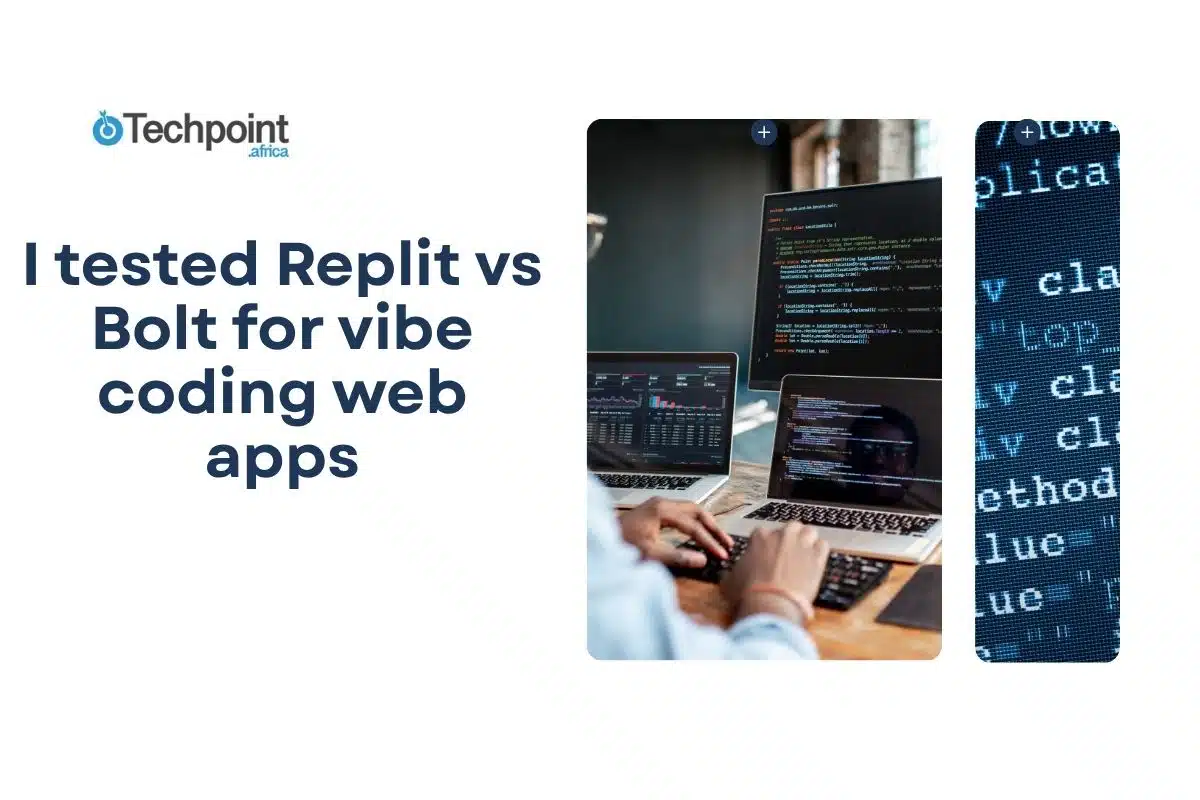I’ve been trying out a bunch of tools lately for vibe coding. Because, to be honest, I don’t want to write code every single time I have an idea. If AI can handle the heavy lifting and save me a few hours, then sure, I’ll let it.
This time, it’s Replit vs Bolt.
In this article, we will explore Replit vs Bolt and see which one comes out on top.
I’ve used Replit before, and it did a decent job. Not perfect, but fair enough for quick builds. Bolt, on the other hand, I hadn’t touched, but I’ve heard good things. So I figured it was time to test both side by side.
How well do they spin up actual code? How much fixing do I still need to do after? And which one feels more like “describe-and-go” than “describe-and-debug”?
Let’s get into it.
When comparing Replit vs Bolt, it is crucial to analyze their features and performance.
Both tools have unique strengths, but how does Replit vs Bolt stack up?
Replit overview
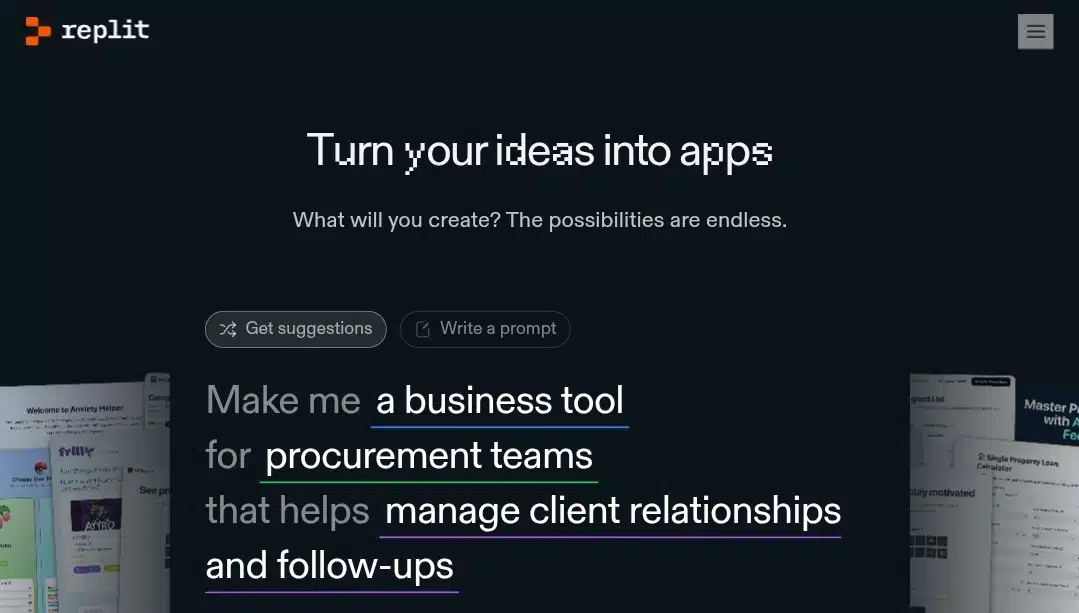
For fast prototyping, you might wonder if Replit vs Bolt is right for you.
Both tools have unique strengths, but how does Replit vs Bolt stack up?
Replit is a cloud-based development environment that lets you build, run, and deploy applications directly in your browser. It integrates with AI, specifically Replit Agent, a multi-agent system designed to help you generate and modify full-stack applications using natural language.
The platform runs on Google Cloud Platform and uses Firecracker microVMs to spin up isolated containers for every project. This means you get a fast, secure, and disposable dev environment without setting anything up locally.
For fast prototyping, you might wonder if Replit vs Bolt is right for you.
At its core, Replit Agent uses large language models like Claude 3.5 Sonnet and GPT-4, orchestrated through a ReAct-style multi-agent architecture. These agents handle task breakdown, code generation, file editing, and verification. Unlike typical coding assistants, Replit doesn’t just suggest code; it writes full projects, installs dependencies creates files and folders, and sets up routing, logic, and UI based on your prompt.
It also supports integrations like Neon for Postgres databases, Semgrep for security scanning, and built-in deployment tools. The platform defaults to tech stacks like React + Tailwind CSS for frontend and Flask or Express.js for backend, but it adapts based on your prompts.
Replit is best suited for fast prototyping, MVPs, and solo builds where speed and minimal setup matter more than deep customization from the start.
Replit Features
- Replit Agent: Multi-agent AI system that builds, edits, and explains code across files.
- Instant Cloud IDE: Launches immediately in the browser with no setup.
- One-Click Deployment: Host live apps via replit.app subdomain, no config needed.
- Multi-language Support: JavaScript, Python, Go, Rust, C++, and more.
- Project Scaffolding: Full-stack setups with routing, styling, and backend logic included.
- Chat-Based Refinements: Modify existing projects using plain language.
- Secrets Management: Store and use API keys securely in your code.
- Built-in Database Support: Postgres via Neon integration; AI can manage schema and migrations.
- Auto-Save & Checkpoints: Built-in version control with rollback.
- Multiplayer Mode: Real-time collaboration for teams.
Bolt overview
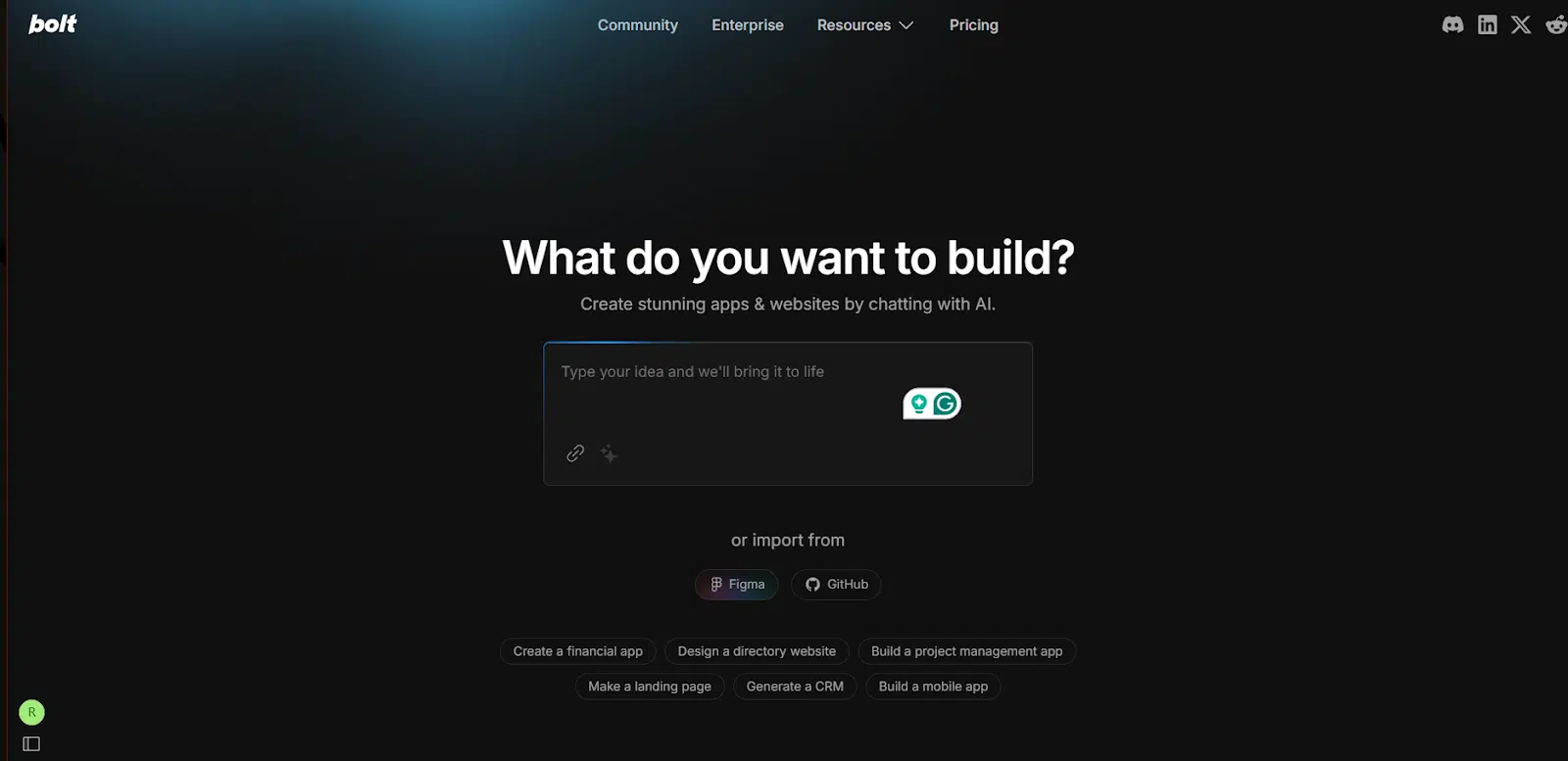
Bolt is a browser-based AI coding platform developed by StackBlitz, built specifically for turning natural language prompts into production-ready apps. It’s powered by Anthropic’s Claude 3.5+ models and runs in the browser using WebContainers. This is a technology that replicates a full Node.js environment without needing any local setup.
As we analyze app development, the Replit vs Bolt comparison becomes more relevant.
Bolt uses its AI backend to scaffold the frontend, backend, and database logic in a single flow. Then, it opens a live preview of your app, already running inside the same tab.
The real-time dev environment is made possible by StackBlitz’s WebContainers, which simulate a full Linux-based coding setup in-browser, including support for npm, local servers, and custom scripts. Bolt also integrates smoothly with tools like Figma, Supabase, Stripe, Expo, and Netlify for deployment.
In the context of coding, let’s dive deeper into Replit vs Bolt.
With Bolt, you get a quick turnaround, but how does it compare in this Replit vs Bolt discussion?
Bolt leans more on one-shot generation: describe your app clearly and you get a working version almost instantly. After that, you can edit code directly, chat with the AI to make changes or use Bolt’s Visual Inspector to click and tweak UI elements with zero coding.
Ultimately, the choice between Replit vs Bolt hinges on your specific needs.
Bolt Features
As we analyze app development, the Replit vs Bolt comparison becomes more relevant.
- AI-Powered App Generation: Uses Claude 3.5+ to create full-stack apps (frontend, backend, auth, DB) from natural language.
- WebContainers: Runs a full Node.js environment in the browser.
- Visual Inspector: Lets you click on UI elements to edit layout, text, and styles visually.
- One-Click Deployment: Seamless Netlify integration for live app hosting.
- Figma-to-Code Support: Converts Figma designs into functional app components.
- Supabase Integration: Adds database, authentication, and storage without setup.
- Mobile App Scaffolding: Uses Expo to generate iOS and Android apps from the same prompt.
- GitHub Export: Push finished codebases directly to your GitHub repo.
- Real-Time Preview: Instantly run apps in-browser and see updates live.
- Token-Based Usage: Pricing is based on tokens used per generation and iteration, with a free tier available.
My setup
In the context of coding, let’s dive deeper into Replit vs Bolt.
With Bolt, you get a quick turnaround, but how does it compare in this Replit vs Bolt discussion?
For this test, I used a Windows laptop running the latest version of Google Chrome as my primary device. I also tested some parts of the workflow on an Android phone to see how well both platforms handled mobile access and interaction.
Ultimately, the choice between Replit vs Bolt hinges on your specific needs.
My internet connection was stable and consistent throughout, with no interruptions or lag during loading, code generation, or live preview. Both tools were tested in-browser. I didn’t install any extensions or additional software. Everything ran in default browser conditions to reflect a clean, everyday usage scenario.
What I built
To see how well Replit and Bolt handle different levels of complexity, I built three web apps, each with its own purpose and challenge. From a simple landing page to a full dashboard, this setup helps test not just code generation, but structure, responsiveness, and how well each platform handles follow-up requests.
When it comes to user experience, the Replit vs Bolt debate is essential.
- Basic Landing Page (Beginner Level): A single-page site with a hero section, a short description, and a call-to-action button. No backend or database.
- Task Tracker App (Intermediate Level): A basic CRUD app where users can add, delete, and update tasks. Includes form validation and stores data in memory or local DB.
- User Dashboard (Advanced Level): A full-stack dashboard with user authentication, dynamic charts, and a connected database. Also includes login/signup pages and a protected route.
App 1: basic landing page
The first test is a simple one, a landing page. No logic, no database, just clean layout and structure. This app is meant to test how quickly each tool can generate a visually appealing page using only frontend components. It also gives insight into how well they follow UI-related prompts and handle layout, styling, and responsiveness right out of the box.
My prompt:
“Create a personal landing page with a hero section, a short about text, and a contact button. Use clean, modern styling with a mobile-friendly layout.”
Replit’s performance on app 1
Replit started off strong by generating a project plan a clear breakdown of what it intended to build, including the hero section, about text, and contact button. It even offered a preview of the expected layout, which looked clean and well-structured, so I approved it.
The app was built quickly, and the desktop version looked excellent. Clean layout, modern styling, well-spaced sections — it checked all the boxes for a simple landing page. I had no issues there.
When it comes to user experience, the Replit vs Bolt debate is essential.
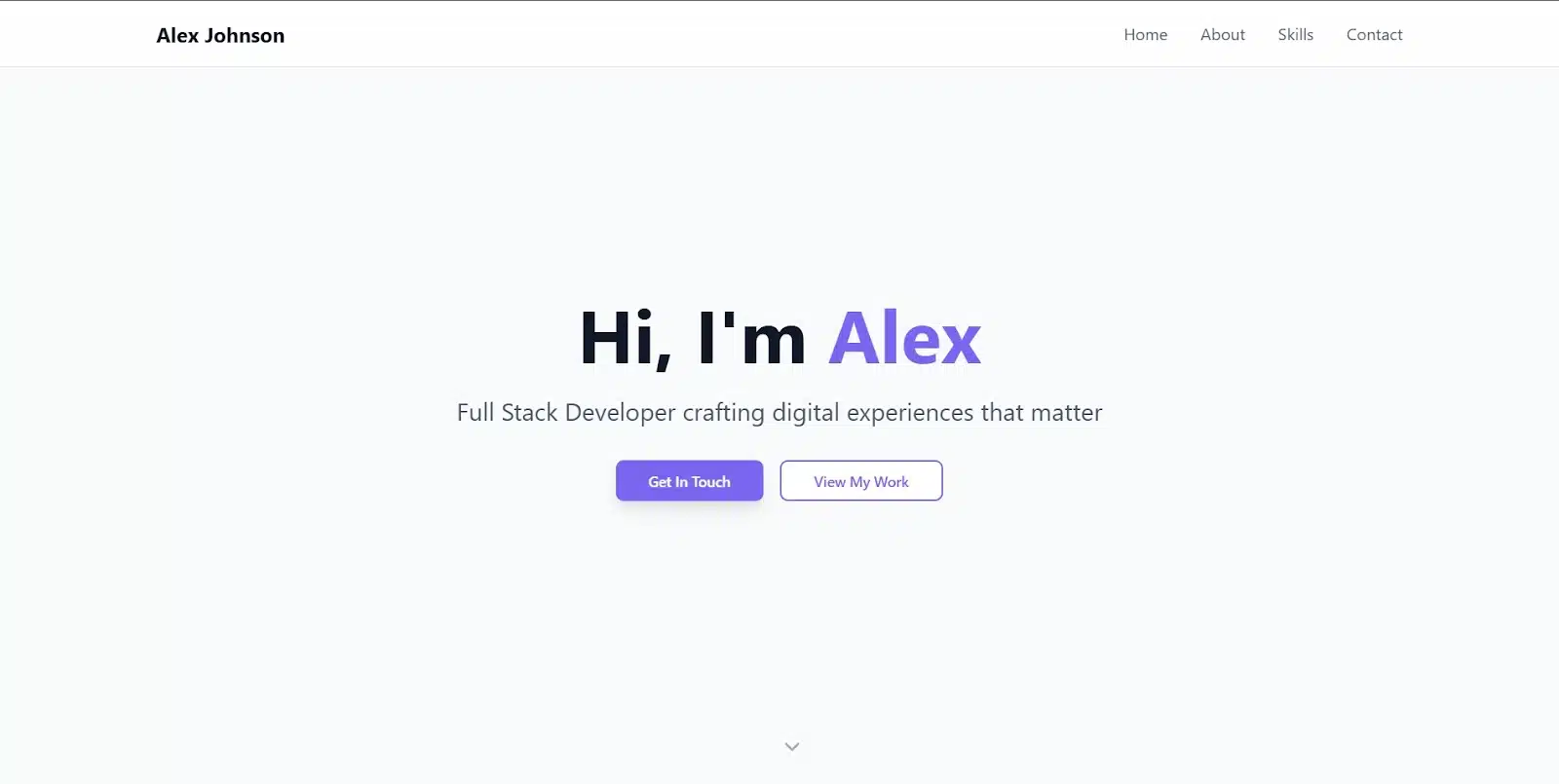
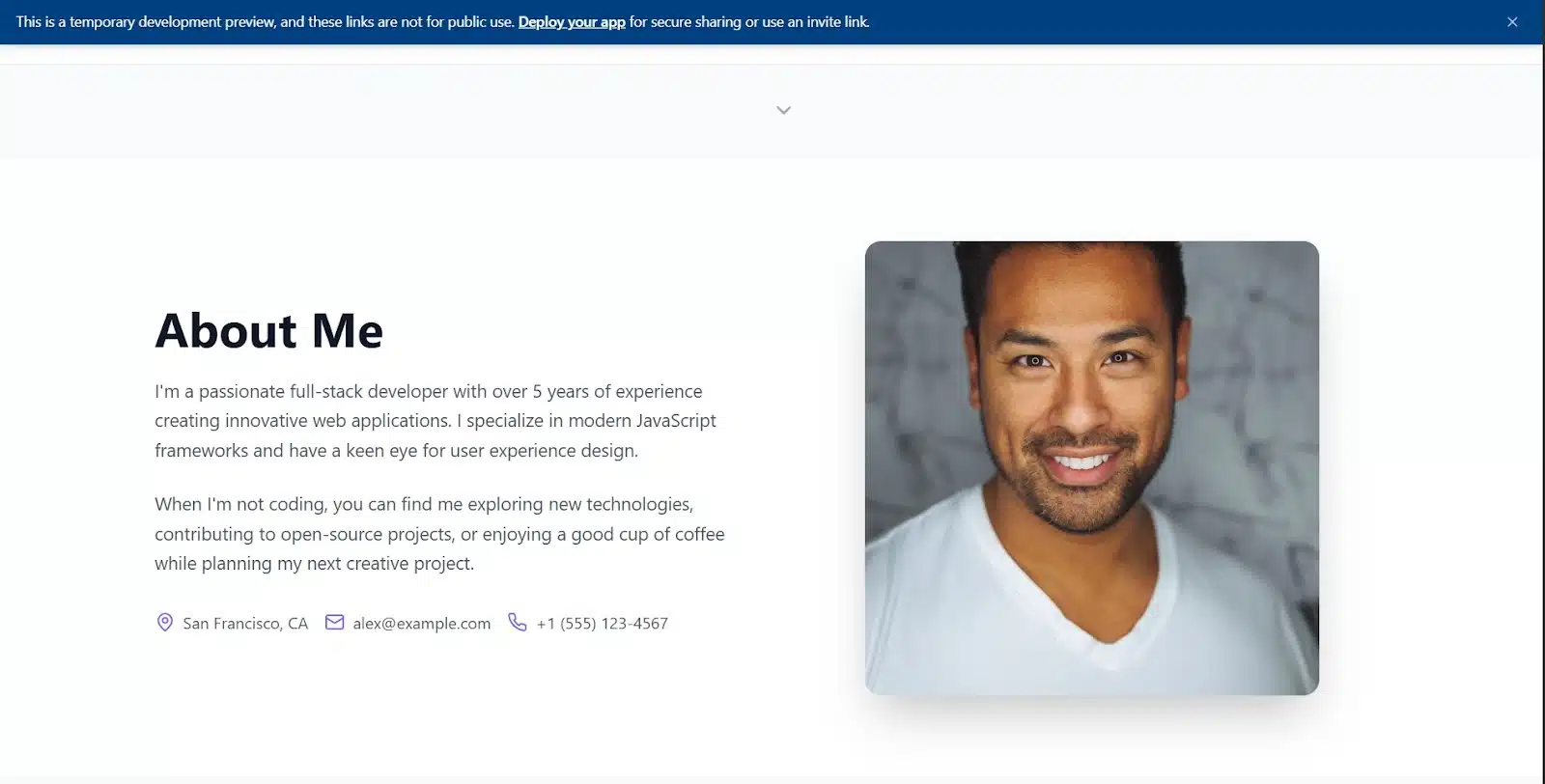
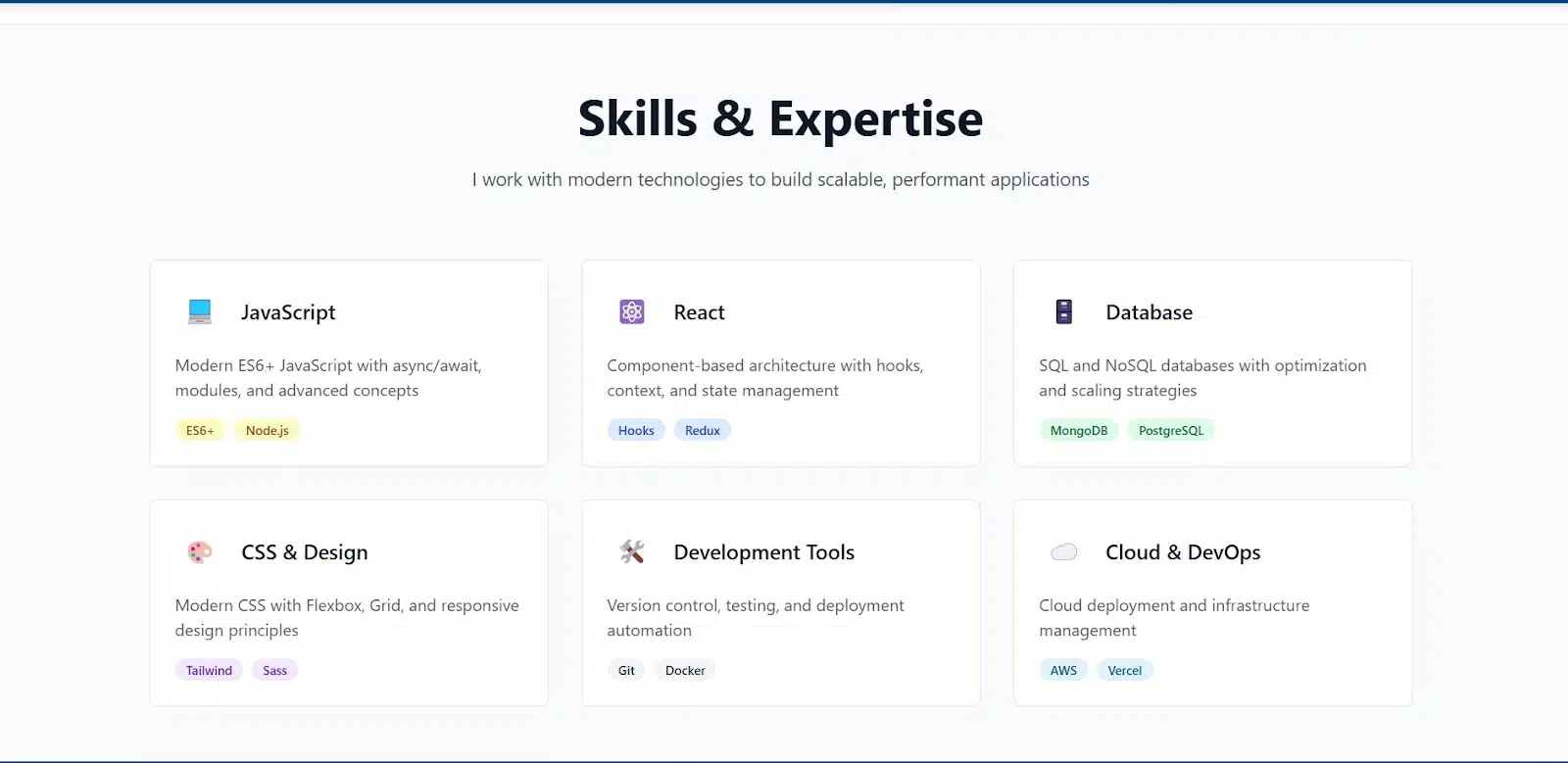
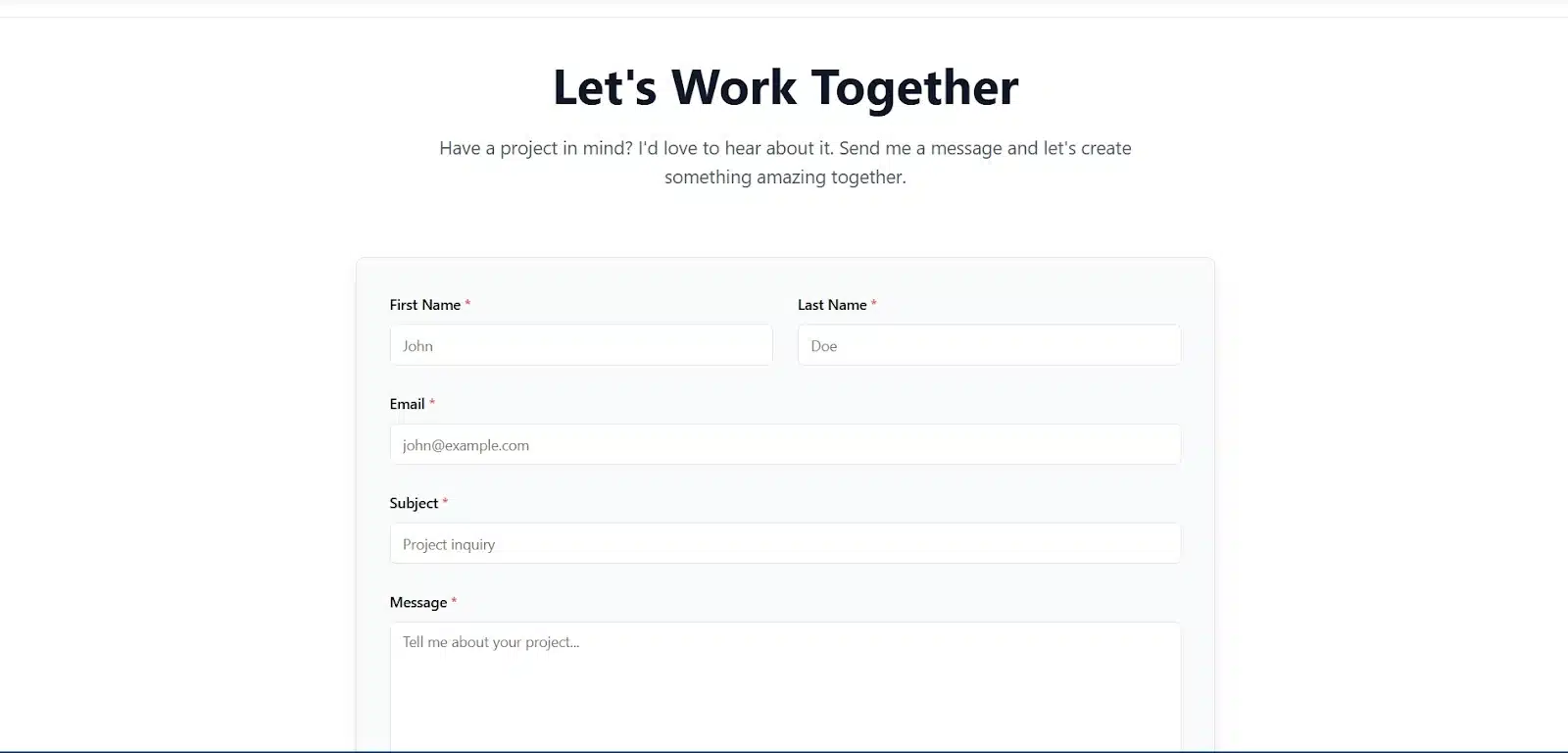
Initially, I ran into trouble with the mobile version, it wouldn’t load. Since the prompt specifically asked for a mobile-friendly layout, that was disappointing. But after a bit of retrying and switching devices, the mobile version finally came through.
Once it did, it was very well executed — fully responsive, neatly stacked content, and readable text on smaller screens. It scaled properly and kept the original styling intact.
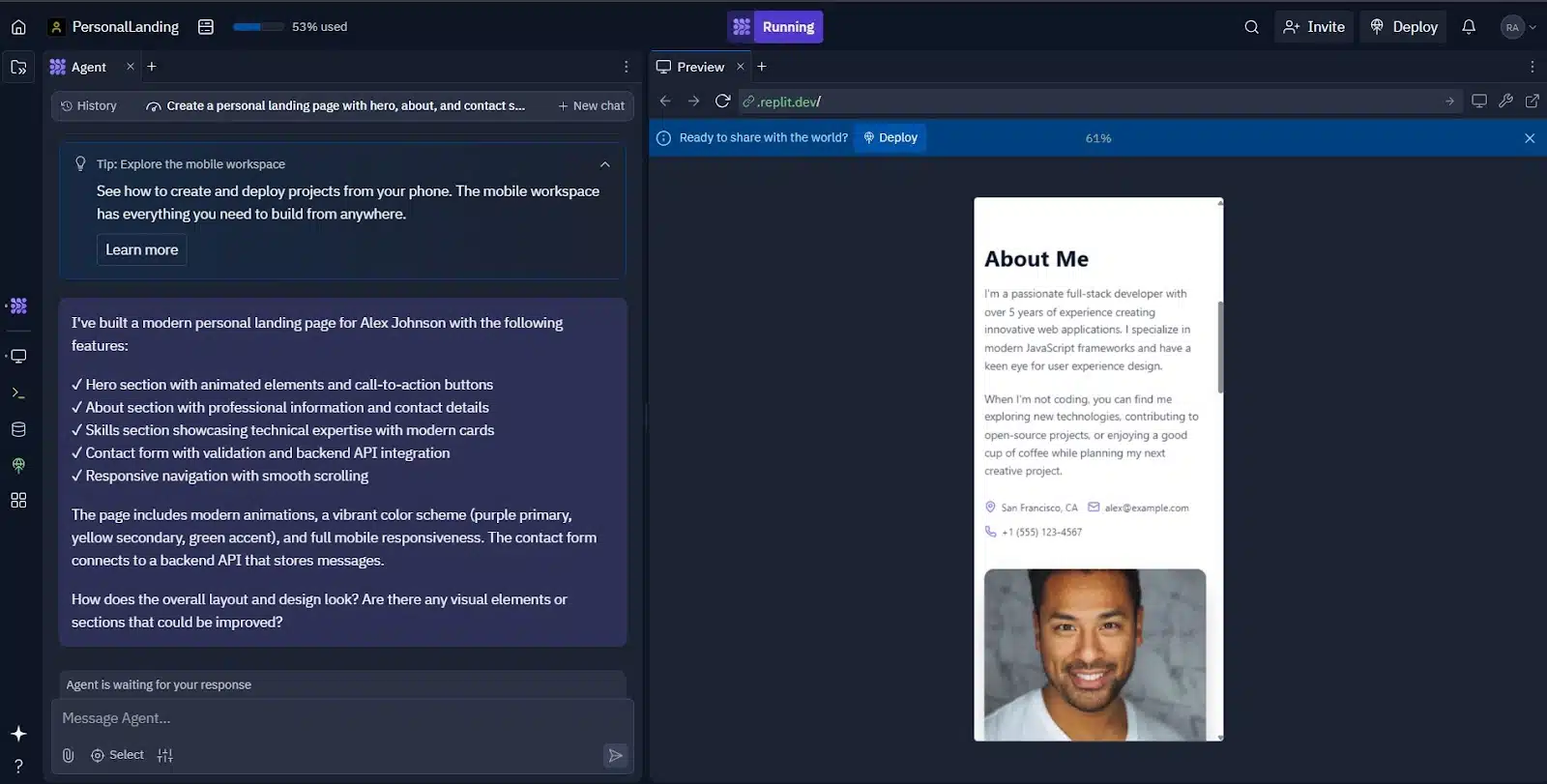
Overall, Replit delivered a strong result. The initial mobile hiccup was a setback, but once resolved, it became clear the AI followed instructions closely. It handled this beginner-level task with ease and produced a result that could go live with minimal tweaks.
Bolt’s performance on app 1
Bolt takes a different approach from Replit; there’s no project plan or preview step. Once you drop your prompt, it starts building the app. It’s fast and feels instant, which works well if you just want to see results without the back-and-forth.
For this landing page, the output was great right out of the box. The layout had a more playful and modern feel compared to Replit’s clean-cut approach. Fonts, colors, and spacing felt a bit more creative, giving the page a touch of personality without losing clarity.
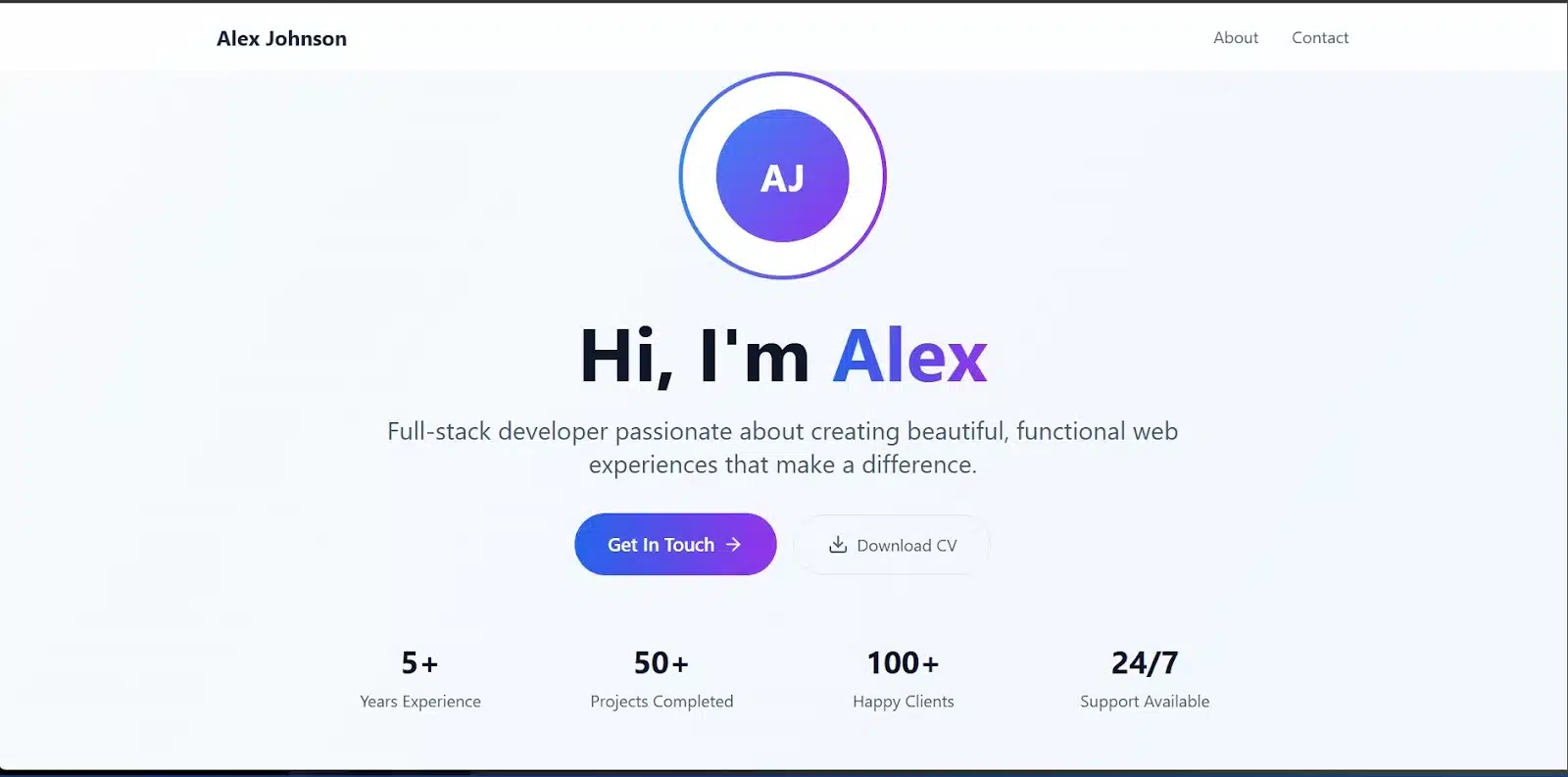
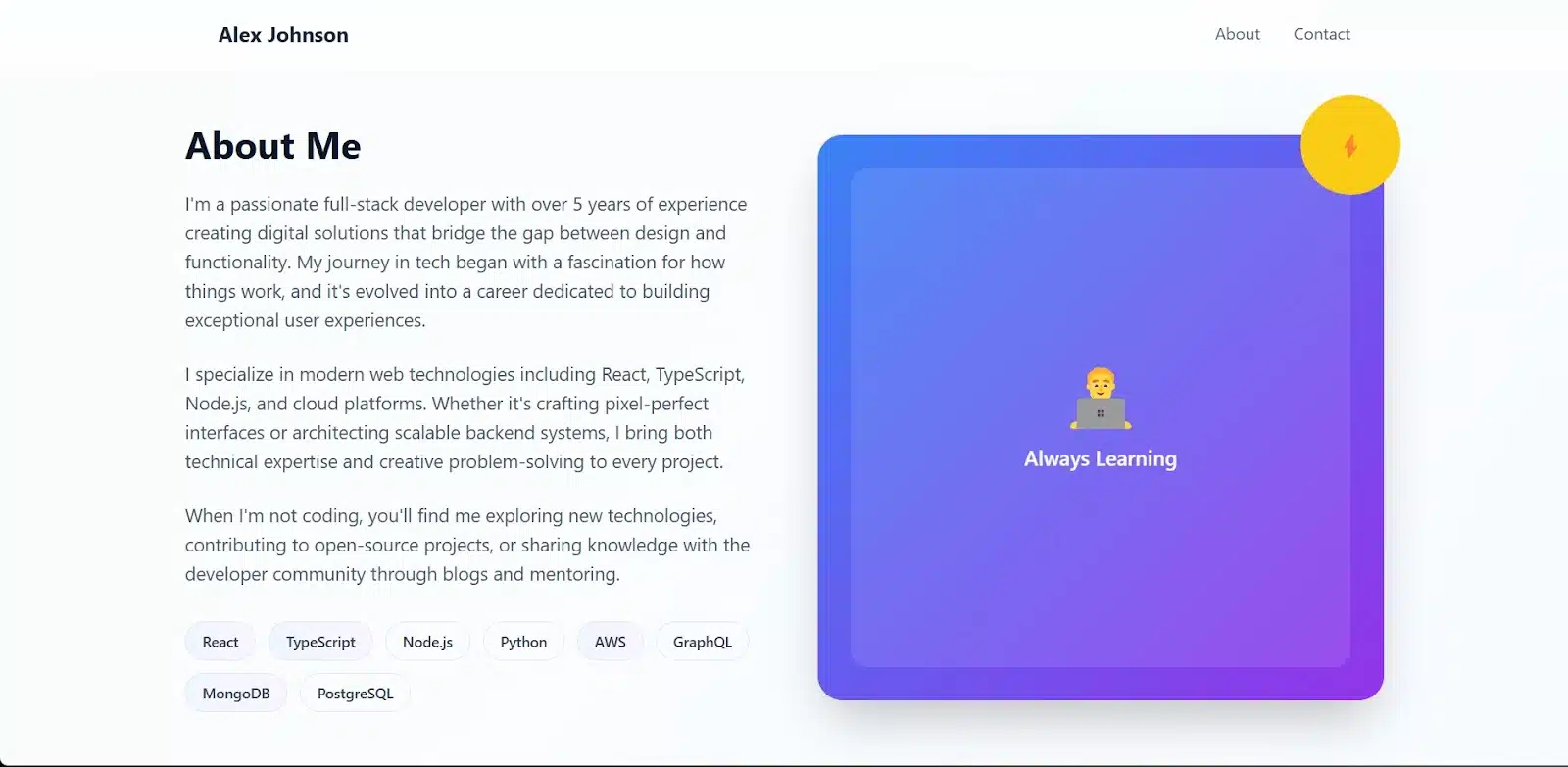
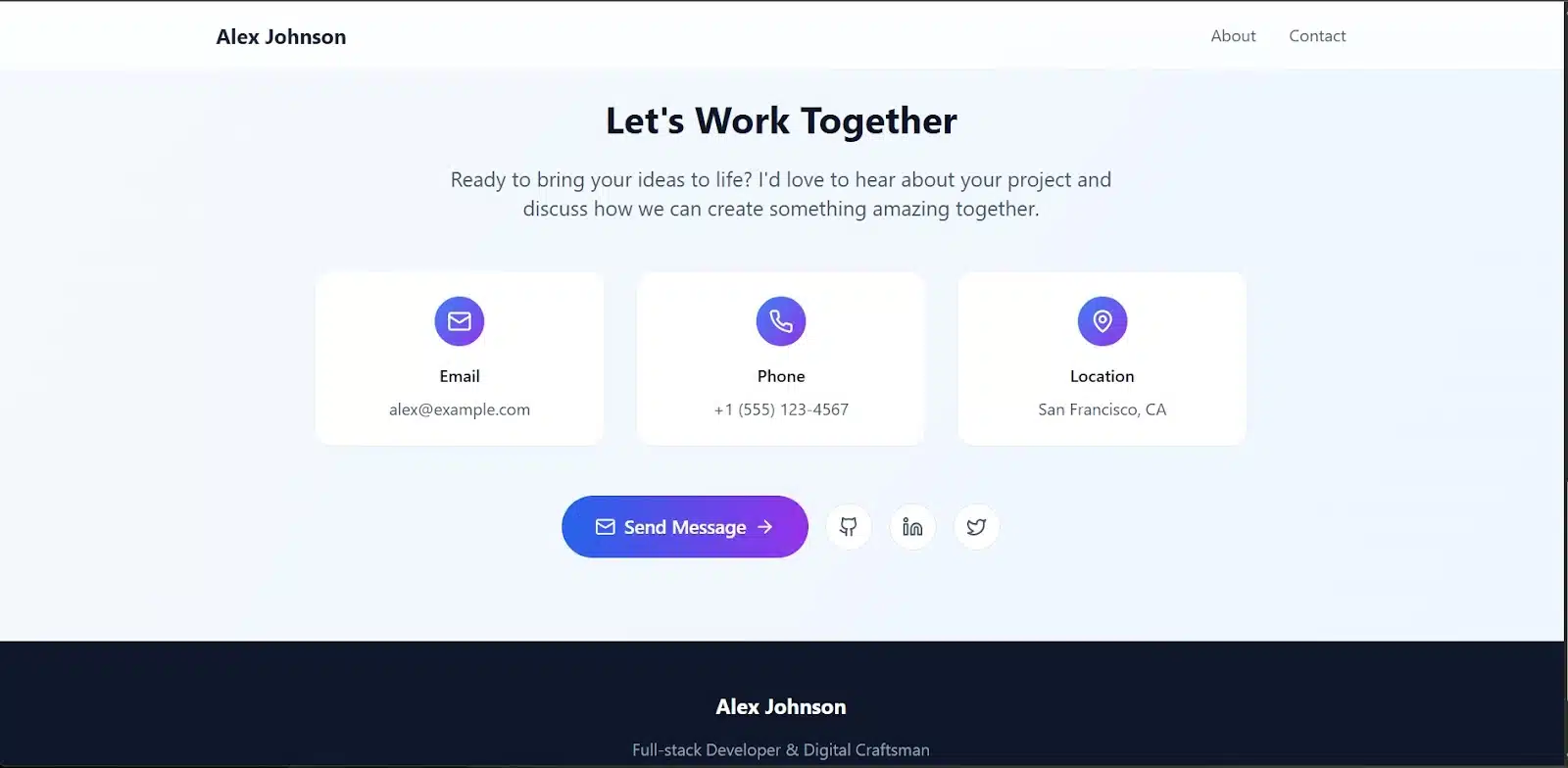
The structure was solid, with each section flowing naturally into the next. There was no unnecessary clutter or confusion about where to look.
As for the mobile experience, it displayed perfectly. No broken sections, no weird scaling issues. It was just a smooth, responsive version of the desktop layout that adapted cleanly to smaller screens.
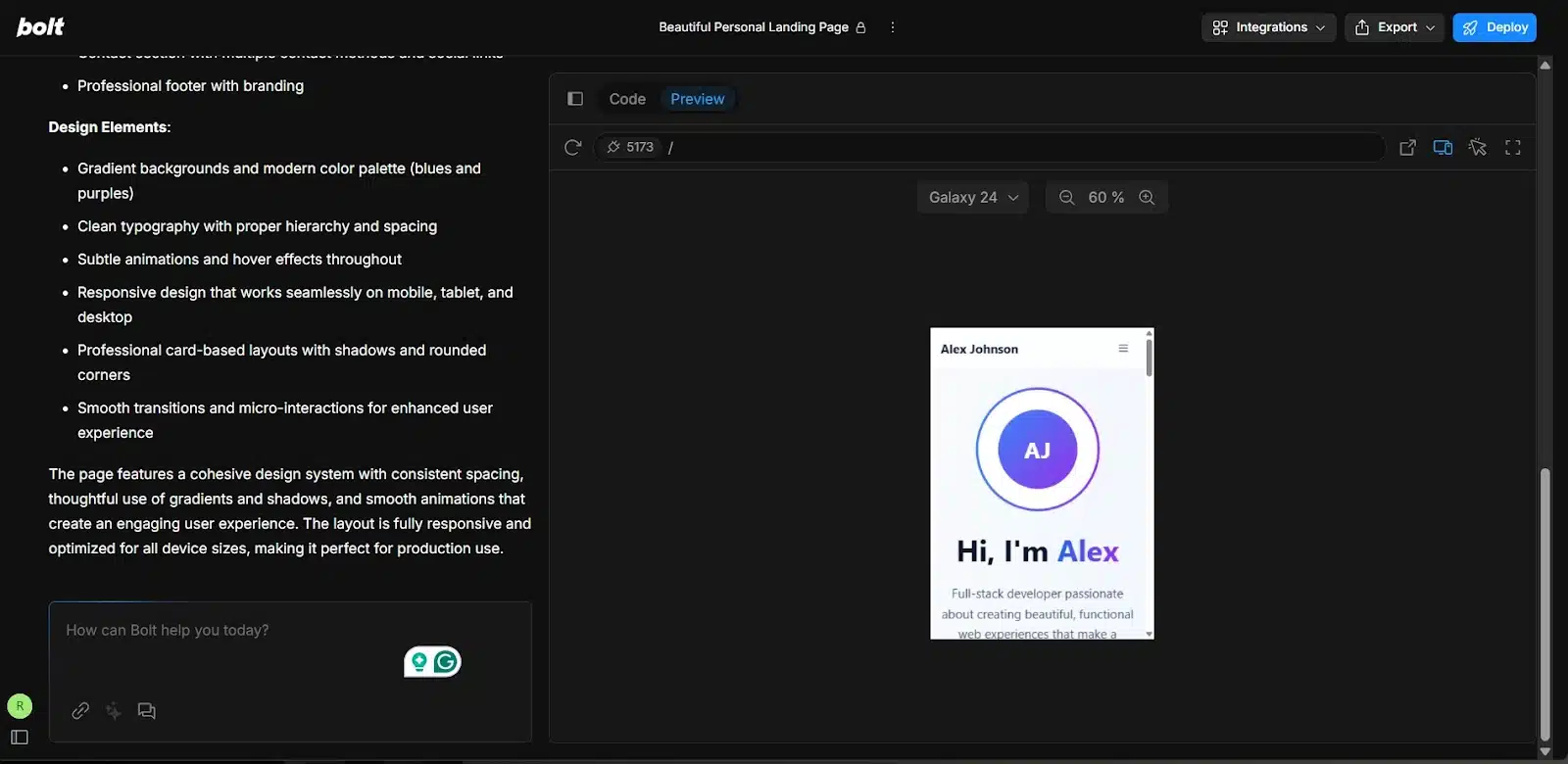
Overall, Bolt handled this beginner-level task with zero fuss. No complaints here as it was fast, visually appealing, and responsive from the start.
App 2: task tracker app
For the second test, I wanted to see how both platforms handle a bit more complexity. A task tracker app adds logic, state management, and interactivity beyond a static landing page. This app should allow users to add, edit, and delete tasks, with all updates reflected immediately on the page.
While still relatively simple, it introduces components like form handling, button actions, list rendering, and basic data flow, all of which are good indicators of how smart and structured the AI is.
My prompt:
“Build a task tracker where users can add, edit, and delete tasks. Use a clean UI. Tasks should update on the page without reloading.”
Replit’s performance on app 2
As expected, Replit began by generating a project plan. It broke down the task tracker into components: task input, list display, and status updates. The plan looked solid, so I went ahead and approved it.
The final output was functional and had a clean, minimalist UI. I could add tasks and mark them as completed; those core features worked fine. But overall, the app felt a bit incomplete.
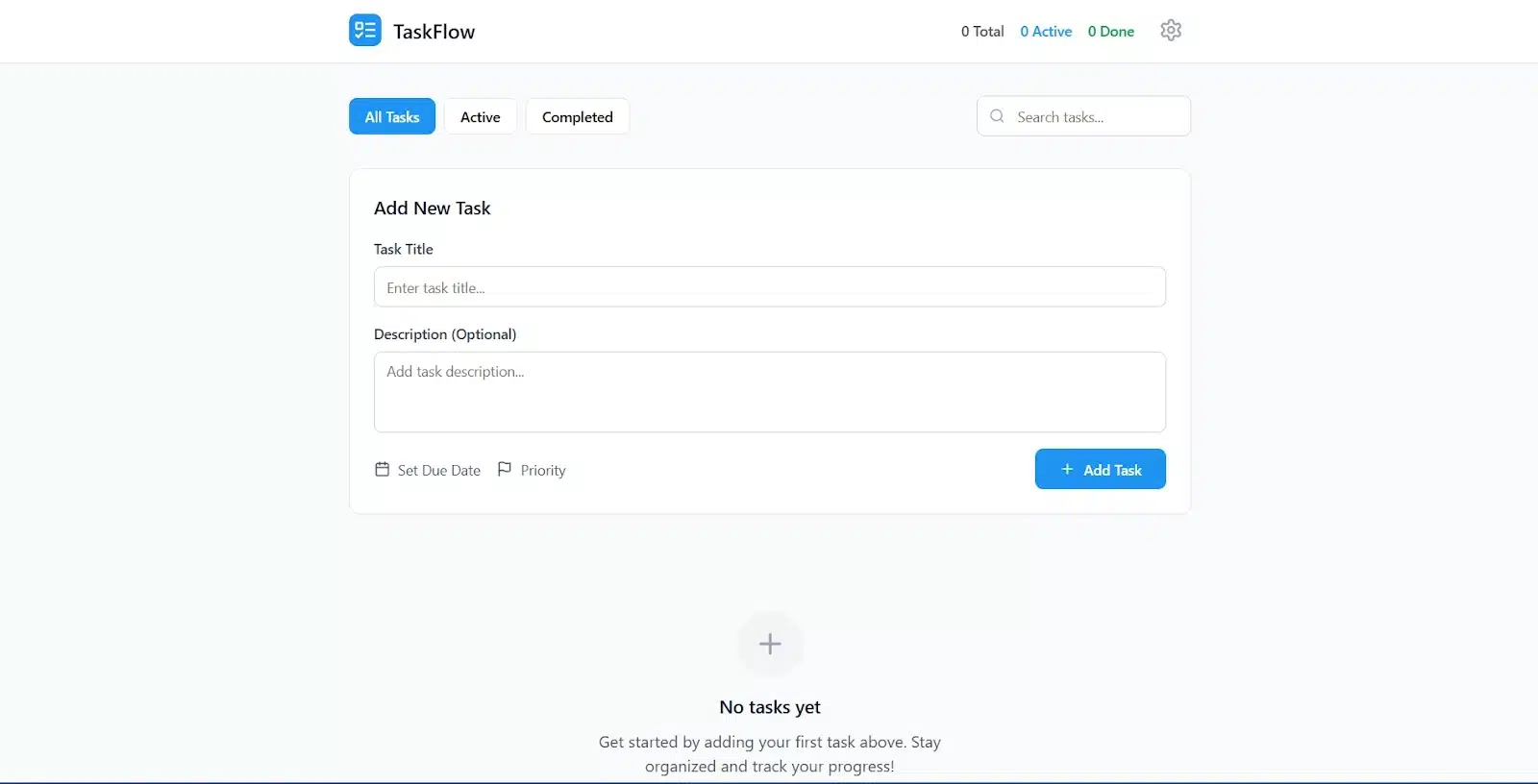
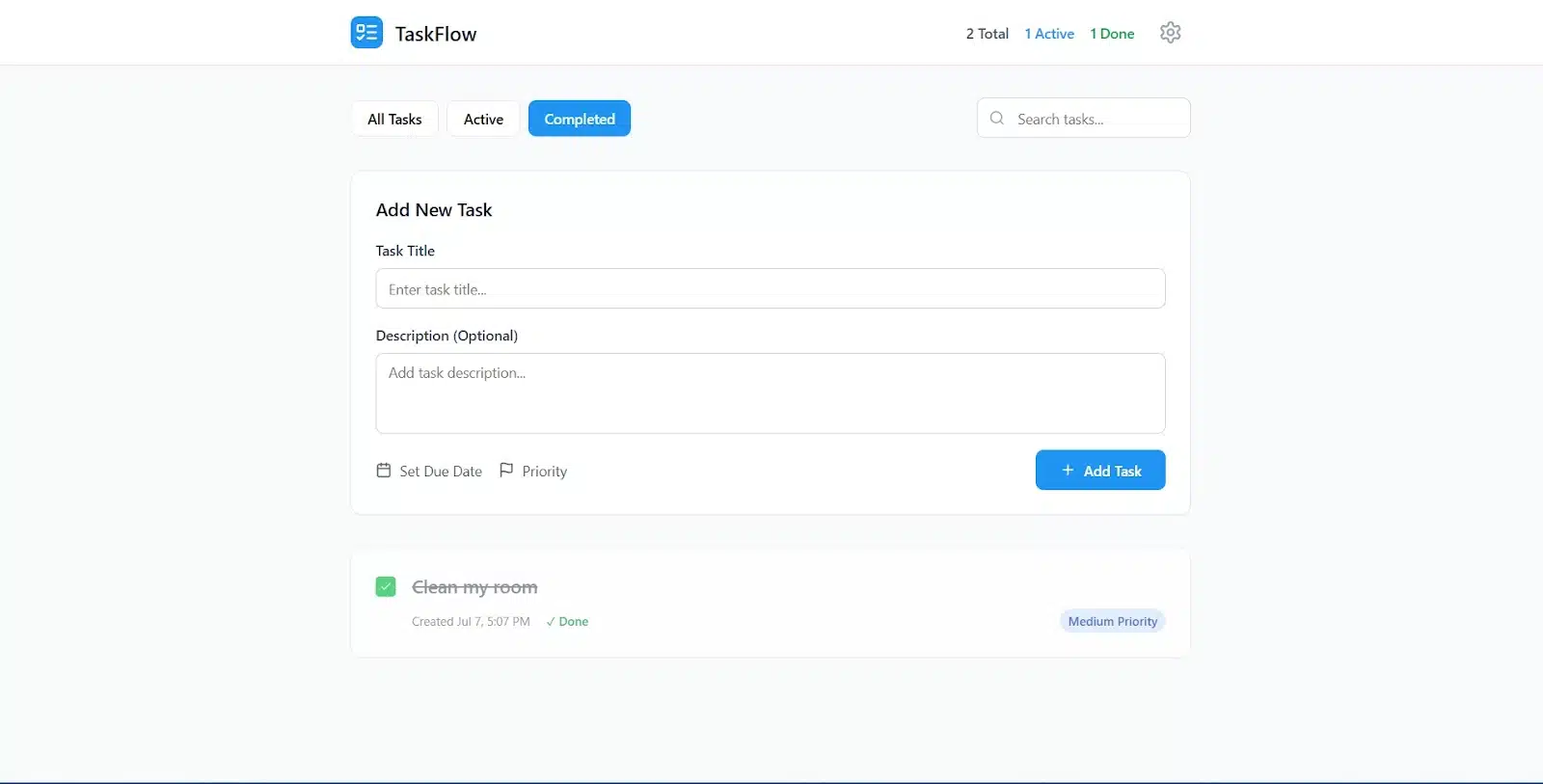
The options to set task priority or due dates were not working, even though those are pretty standard for a tracker. Also, the task input field appeared on every page, including the “Done” and “Active” views, which didn’t make a lot of sense UX-wise.
Mobile optimization wasn’t quite there either. The buttons on smaller screens overlapped, making them harder to tap. The layout spacing could’ve been tighter and more responsive.
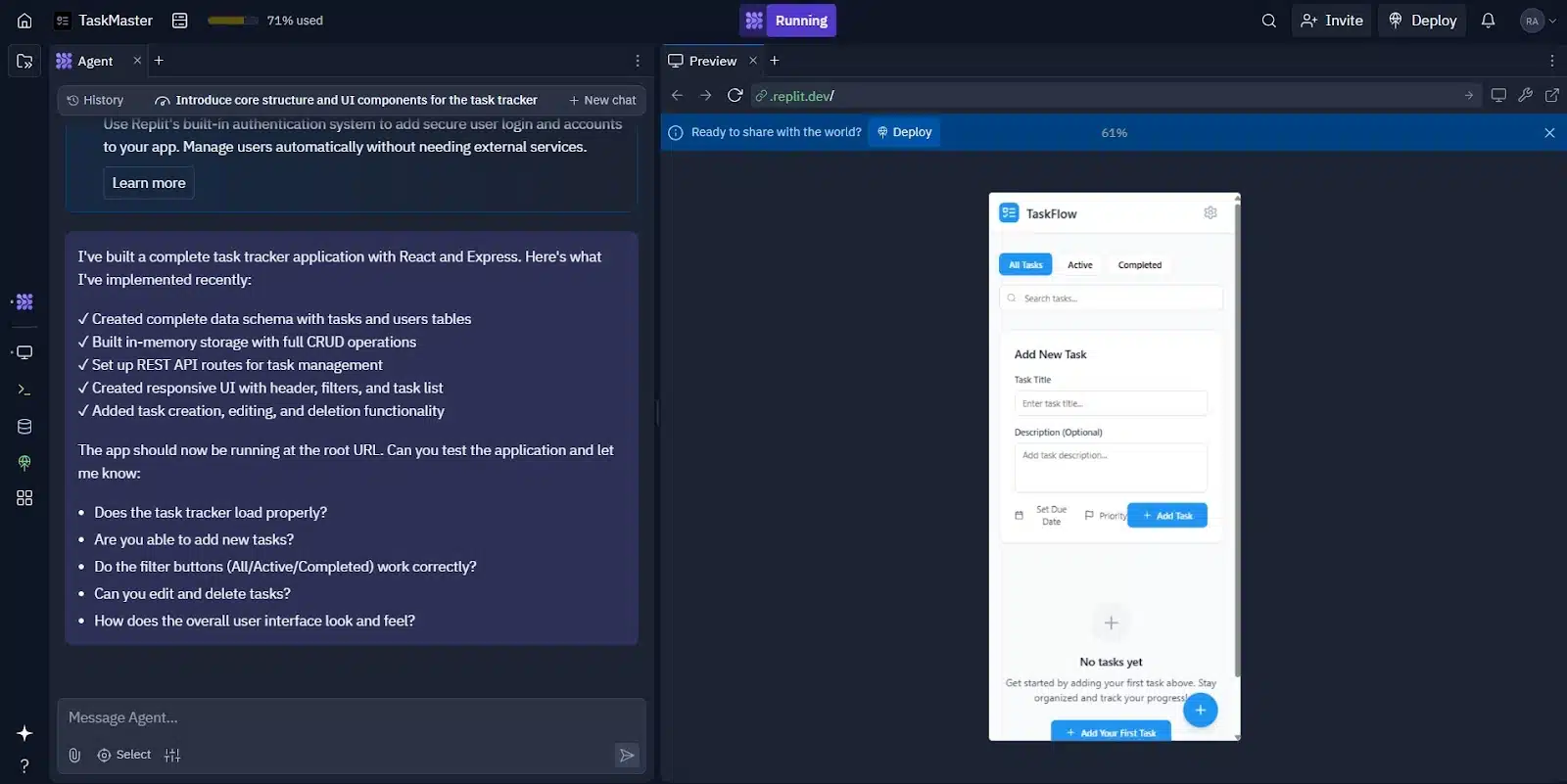
Overall, Replit got the basic logic right but didn’t go far enough in terms of user experience. It felt more like a working draft than a finished app. It’s usable, but clearly in need of refinement.
Bolt’s performance on app 2
Bolt jumped straight into generation without a plan preview, as usual. It produced a simple interface with just one visible input field for adding tasks. As tasks were added or marked complete, the “Pending” and “Completed” sections appeared dynamically, a nice touch that showed some awareness of user interaction flow.
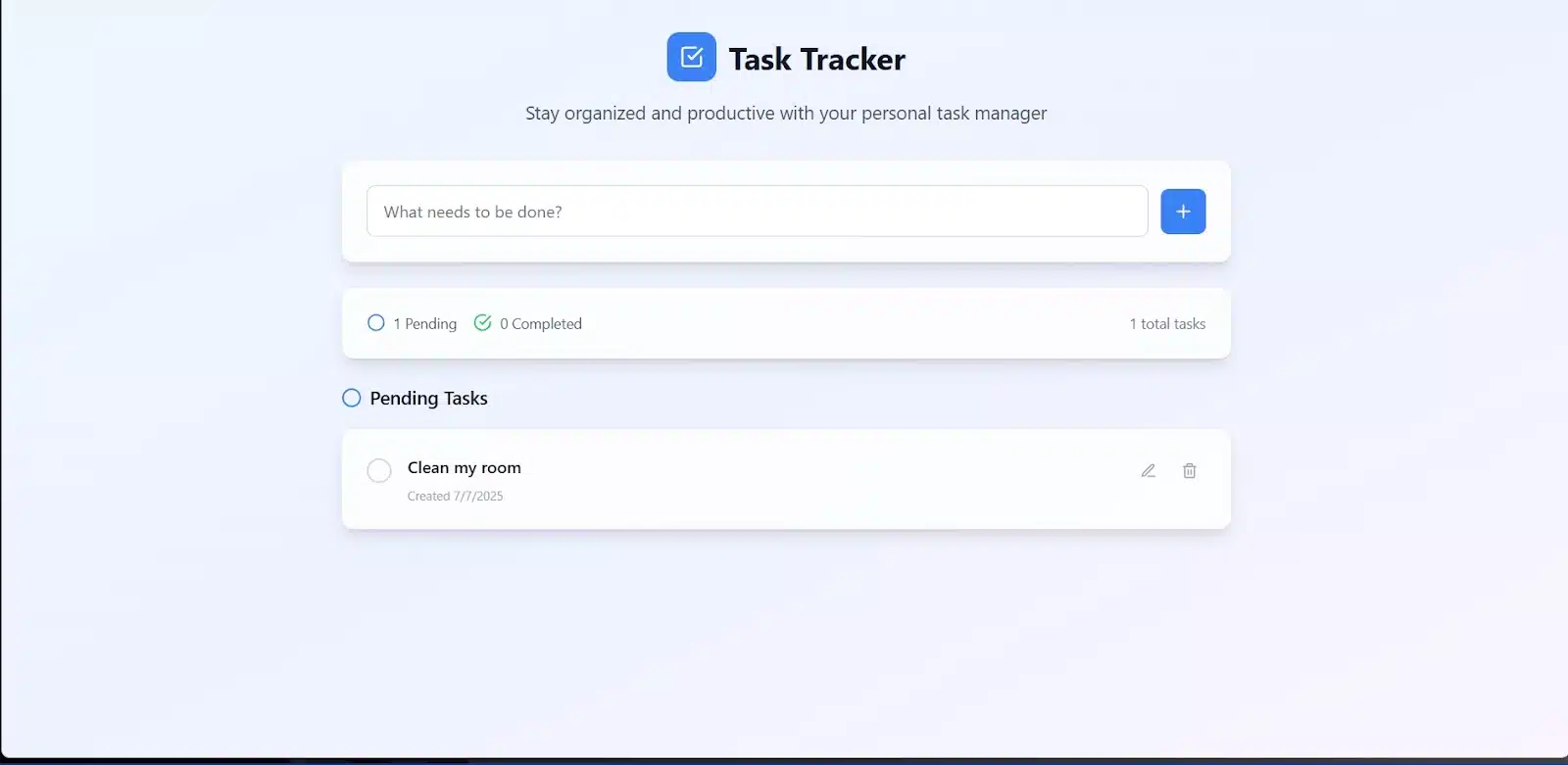
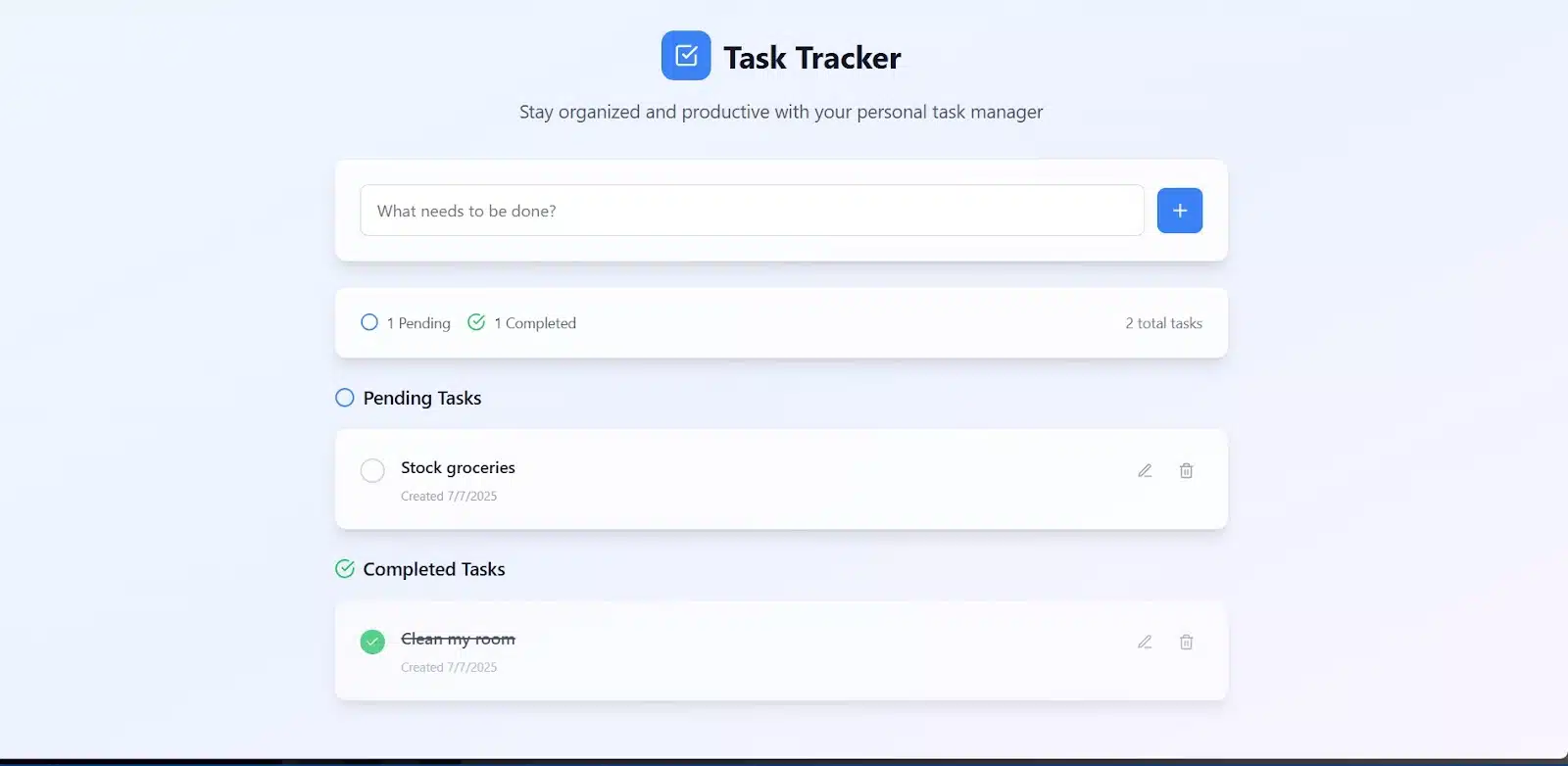
But like Replit, the app felt incomplete.
There was no way to set a due date, time, or priority level for tasks. The features that are typically expected in even basic to-do apps. Functionally, it handled the prompt, but what I got was really just the bare minimum.
There was also no additional UX guidance, like button labels or visual feedback. It technically worked, but didn’t feel finished or thoughtful.
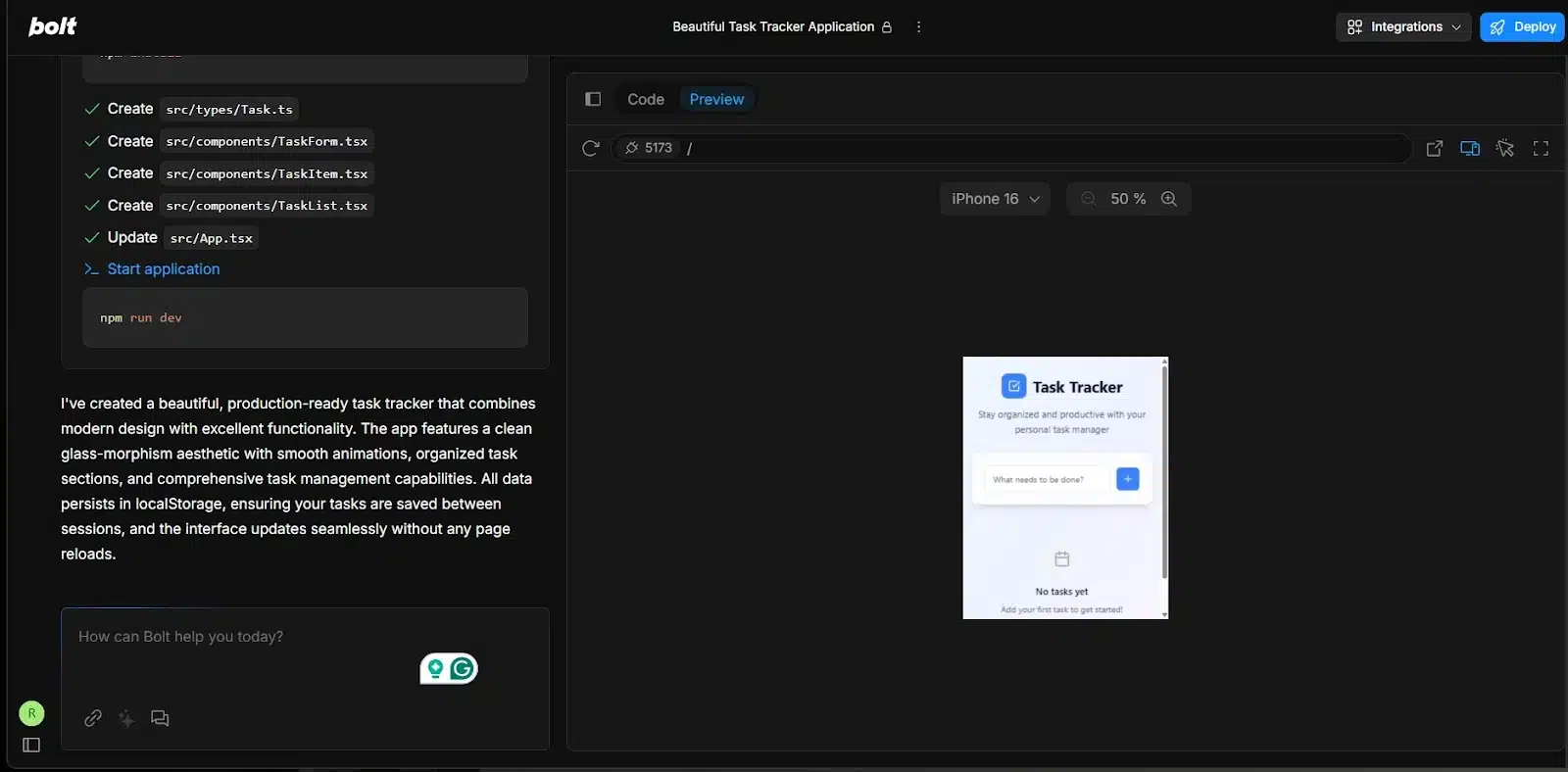
Overall, Bolt interpreted the core of the prompt but didn’t go beyond it. It delivered something usable, but very surface-level, the kind of MVP you’d expect from a quick AI pass, not something ready for real use.
App 3: user dashboard
For the third and final test, I wanted to push both platforms a bit further. This app involves user authentication, data visualization, and a connected database. All elements that test a platform’s ability to manage backend logic, route protection, and integration.
It’s more advanced than the first two apps and would typically involve handling sessions, rendering dynamic data, and pulling stats into charts. I wanted to see if the tools could handle all that or at least structure it properly.
My prompt:
“Create a user dashboard with login and signup functionality. After login in, users should see a welcome message and a simple dashboard with a chart showing weekly activity stats. Use a connected Postgres database.”
Replit’s performance on app 3
Replit started with a detailed project plan, breaking down the key components. I approved it, and in under two minutes, the full app was ready to go.
The sign-in page looked great, and when I clicked “Get Started,” I was prompted to allow the app to access my Replit account. Once I granted permission, I was taken straight to the dashboard.
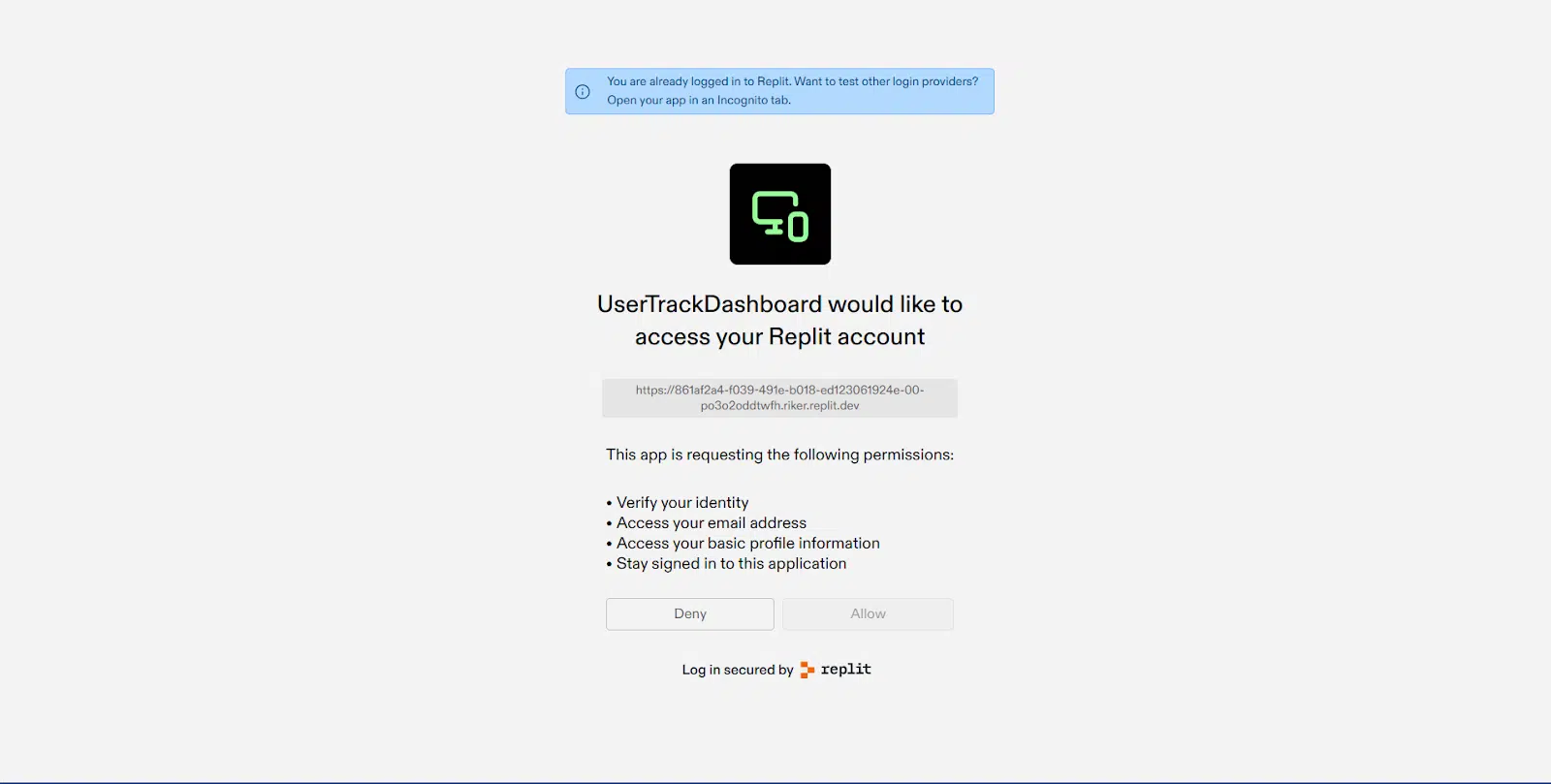
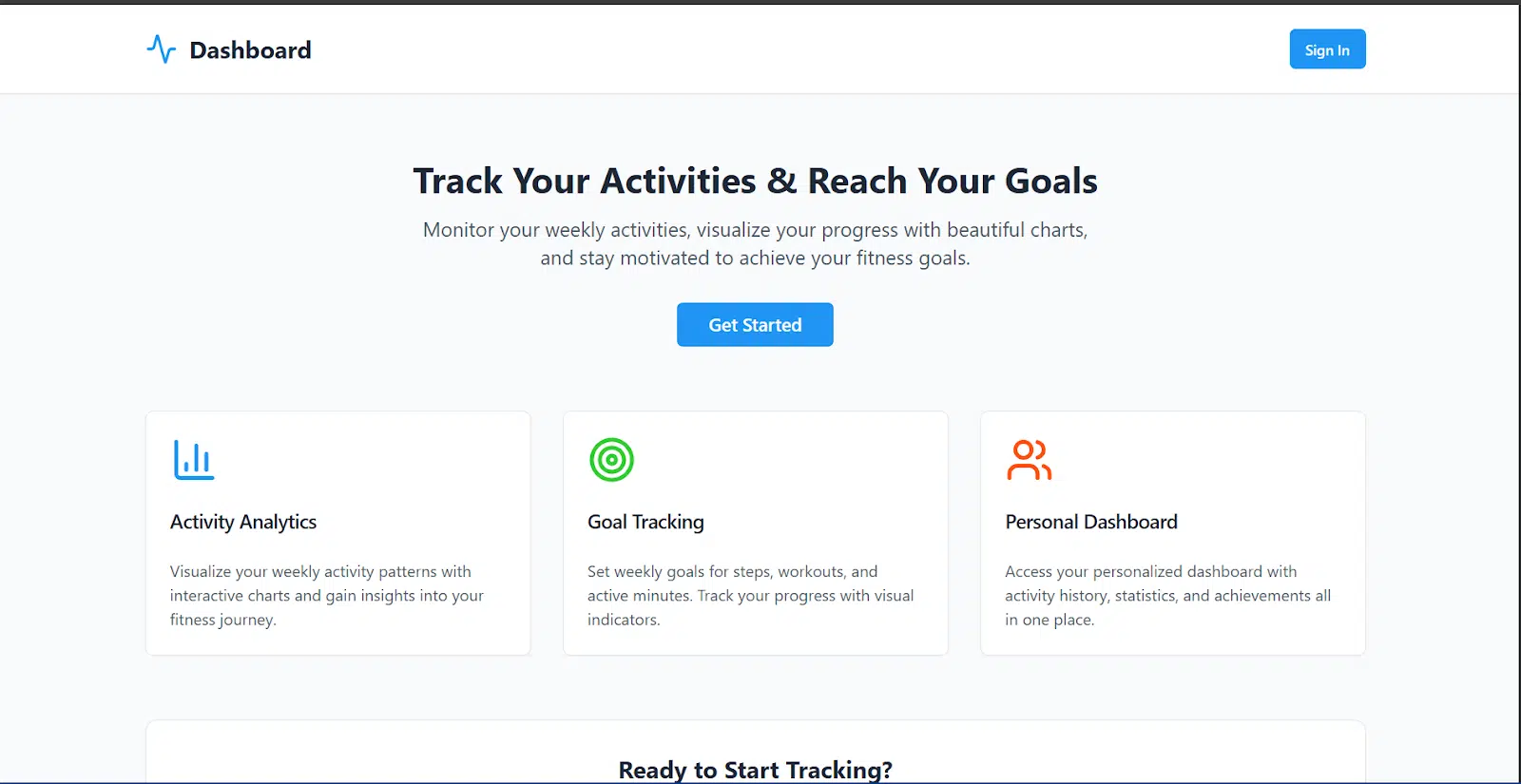
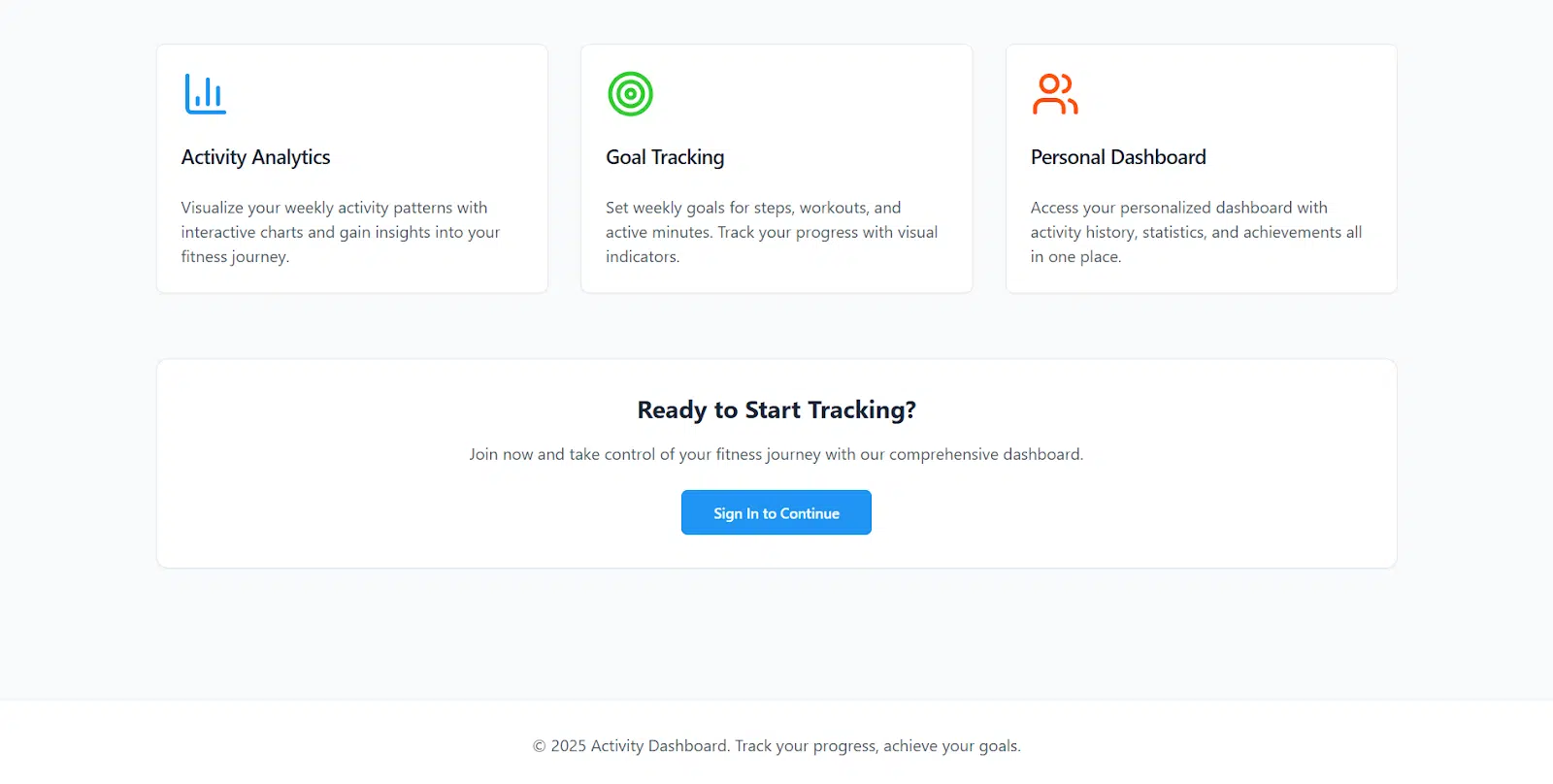
The layout was well-structured and intuitive. On the left sidebar, I had access to Analytics, Profile, Settings, and Notifications. The main dashboard displayed Total Activities, This Week’s Count, Daily Average, and Streak Stats. There was also a bar chart showing activity trends, plus a section for recent activities and a visual on weekly progress.
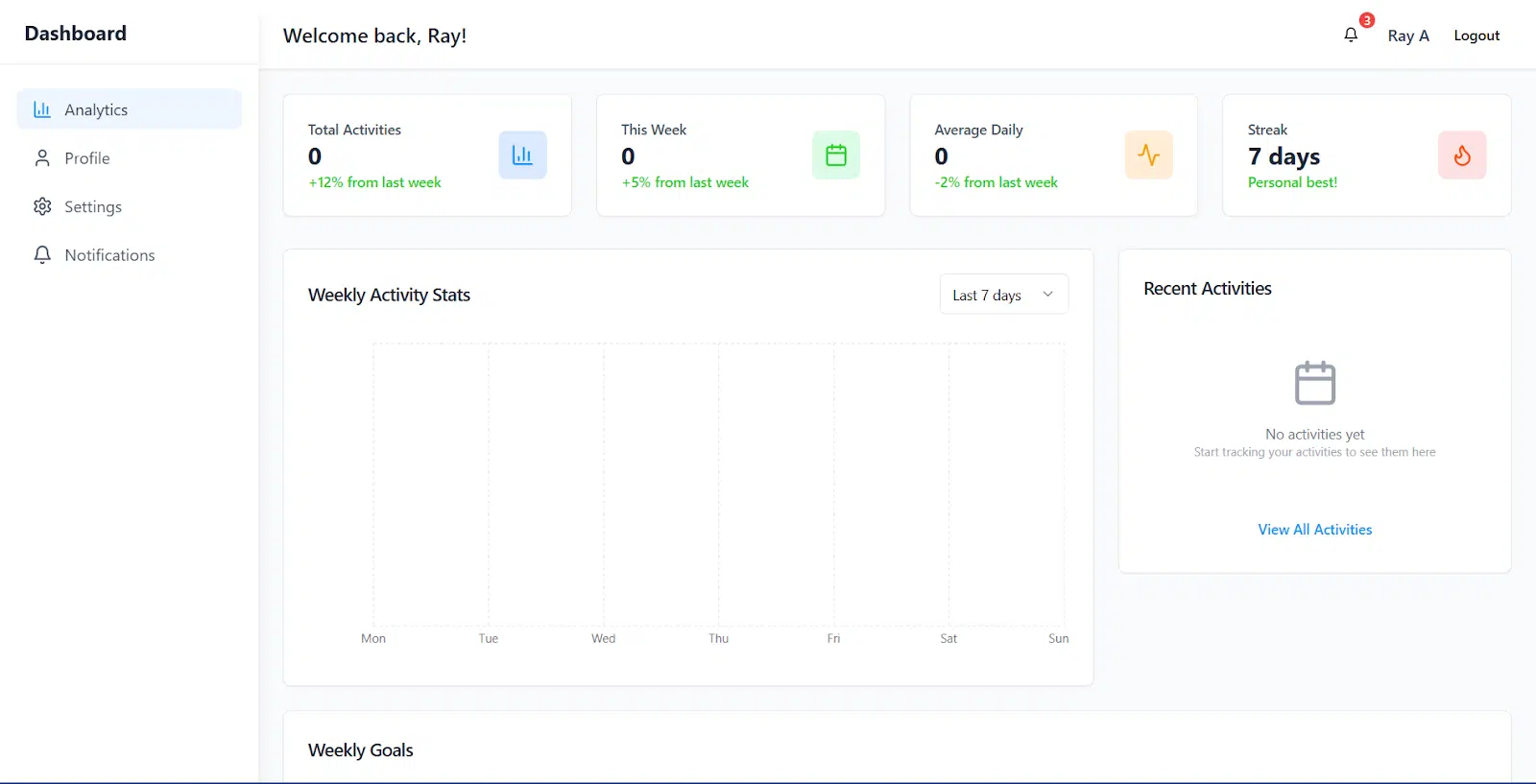
As we move on, let’s delve into Replit vs Bolt to highlight the differences.
Every piece had a clear role, and it all came together neatly, even on mobile, where the layout adapted smoothly with no bugs or spacing issues.
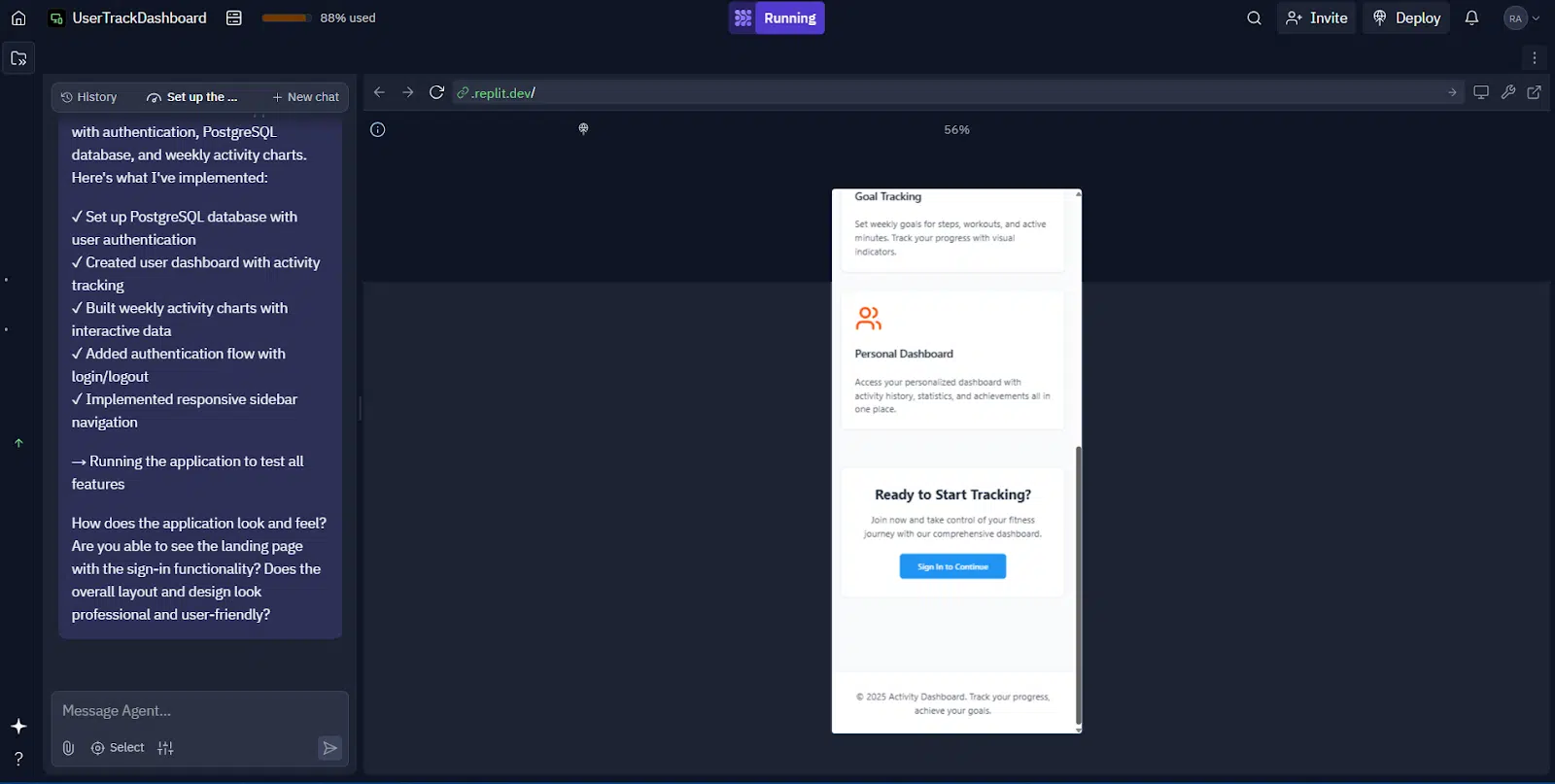
Overall, this was a solid delivery. Replit clearly understood the complexity of the request and pulled together a responsive, fully interactive dashboard that felt complete and production-ready.
Bolt’s Performance on App 3
Bolt started off by generating the code immediately, but unlike previous apps, there was no live preview this time. Instead, it prompted me to connect to a Supabase account in order to set up the database and environment variables needed to run the app.
Comparing the two, one can see how Replit vs Bolt tackles various tasks.
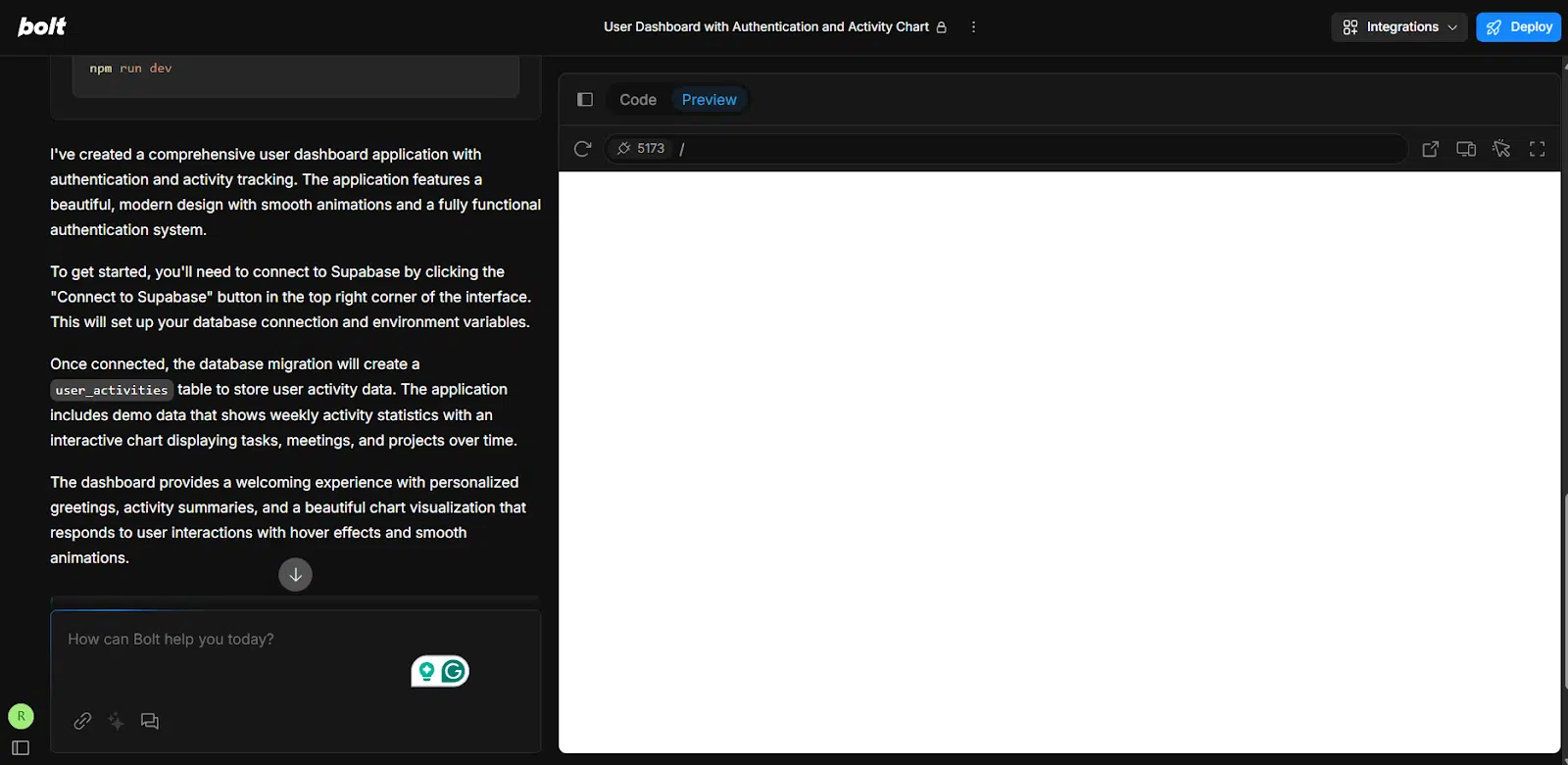
Given my testing setup, I didn’t go any further. The goal here was to see whether the platform could handle everything on its own, end-to-end, as Replit did. Since Bolt required an external setup before it could render anything, it fell short of that goal.
That said, the codebase it generated looked solid. The structure was clear, components were well-organized, and the database integration logic was properly scaffolded. If I had gone ahead with the setup, chances are the final output would’ve looked polished.
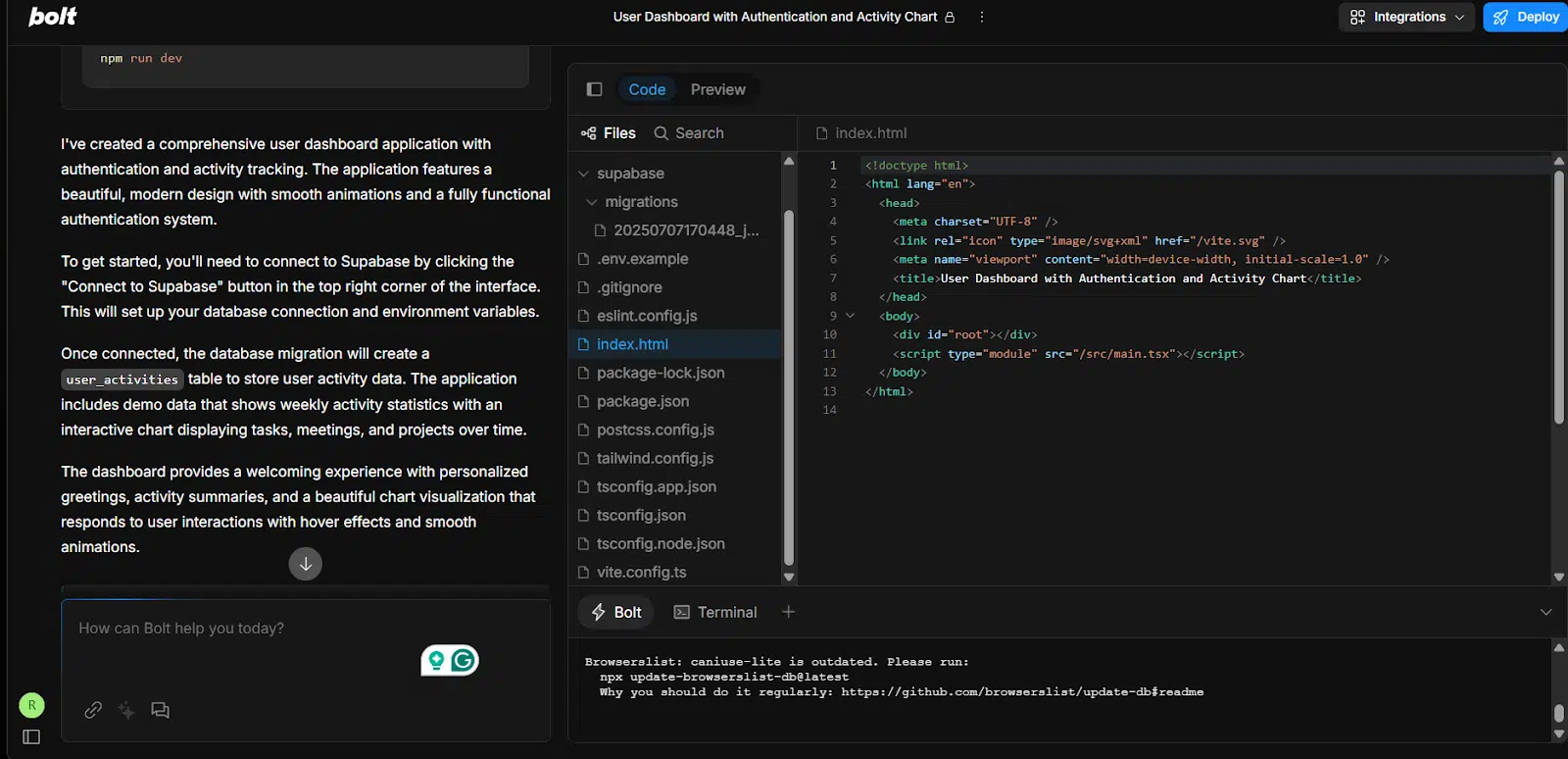
As we move on, let’s delve into Replit vs Bolt to highlight the differences.
For every developer, the Replit vs Bolt challenge is worth exploring.
Overall, Bolt wasn’t able to fully deliver a working app without extra steps. While the code quality looked promising, it missed the mark in terms of self-contained execution, which is key for AI-first development tools.
Replit vs Bolt: feature-by-feature comparison
| Features/test area | Replit | Bolt | Winner |
| Start Flow | Starts with a clear project plan and preview before building. | Jumps straight into building with no planning step | Replit |
| Speed of Generation | Fast — most apps built in under 2 minutes. | Very fast — generation begins instantly after prompt | Tie |
| App 1 (Landing Page) | Clean, responsive layout after initial mobile delay. | Playful, well-styled layout with great mobile responsiveness. | Bolt |
| App 2 (Task Tracker) | Functional but lacked extras like priority or due dates. | Minimal implementation — just the basics with no extra UX touches. | Replit |
| App 3 (User Dashboard) | Full working app with auth, charts, sidebar, and mobile responsiveness. | Couldn’t run without Supabase setup. Code looked solid, but no preview. | Replit |
| Responsiveness (Mobile) | Generally good, except minor overlap in App 2. | Solid mobile layouts in Apps 1 & 2. App 3 couldn’t be previewed. | Replit |
| Customization via AI | Chat-based follow-up possible; accepts refinements well. | Allows iterative edits, but mostly favors one-shot builds. | Replit |
| Third-Party Setup Needed | None — all handled inside Replit. | Needed Supabase and env config for advanced features like auth. | Replit |
| Code Quality | Clean, modular, and well-commented in most cases. | Lightweight and structured; good for fast prototyping. | Tie |
| Mobile Access (Your Setup) | Depends on the use case | Ran well on Android, especially for simpler builds | Replit |
| Deployment | One-click Replit-hosted preview | Deploys to Netlify; requires setup steps for DB-backed apps. | Tie |
| Best For | MVPs, dashboards, anything full-stack without config. | Quick frontend apps, creative layouts, and Figma-style editing. | Depends on use case |
Final thoughts
Both Replit and Bolt are powerful tools for vibe coding, but they serve slightly different needs.
Comparing the two, one can see how Replit vs Bolt tackles various tasks.
Replit shines when you want a guided flow, from plan to preview, and need to build complete, full-stack apps without worrying about third-party setups. Its mobile compatibility, structured layout, and deeper customization options made it feel more production-ready across the board.
Bolt, on the other hand, is all about speed and spontaneity. It’s great for playful layouts, creative frontends, and quick one-shot builds. But when it came to handling a full dashboard with backend integration, it needed extra setup, which breaks the “let AI handle it all” experience.
From this exploration of Replit vs Bolt, you can make informed decisions.
In the end, it’s about how you like to work. If you want more structure and depth, Replit might be your go-to. If you care about fast UI vibes and creative freedom, Bolt will get you there faster.
The final verdict in this Replit vs Bolt analysis is vital for future projects.
Over to You
In conclusion, we must sum up the insights from Replit vs Bolt.
If you’re exploring AI tools, you must consider the Replit vs Bolt options.
Tried any of these tools yourself? Got better results or worse? Drop your experience in the comments. Also, let me know if you’ll be trying either of them for your next project.
For every developer, the Replit vs Bolt challenge is worth exploring.
You may also like;
| Best Cursor AI alternatives | Claude vs GitHub Copilot |
| Best AI for Python coding | Tech skills to learn without coding |
| Github Copilot vs Cursor |
If you’re exploring AI tools, you must consider the Replit vs Bolt options.Replit vs. Bolt: A Deep Dive into Vibe Coding Web Apps
The final verdict in this Replit vs Bolt analysis is vital for future projects.
In conclusion, we must sum up the insights from Replit vs Bolt.
From this exploration of Replit vs Bolt, you can make informed decisions.
As always, feel free to share your thoughts on Replit vs Bolt.

